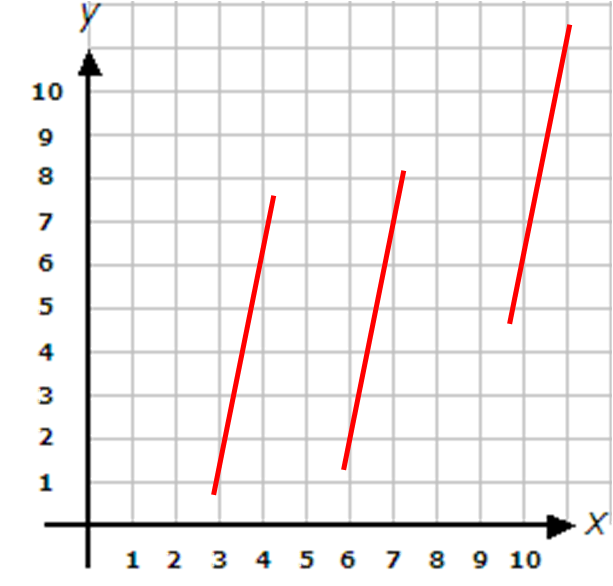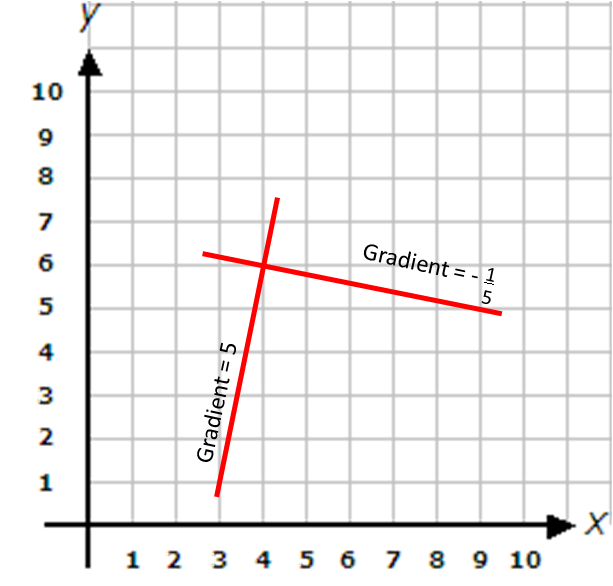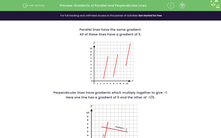Parallel lines have the same gradient.
All of these lines have a gradient of 5.

Perpendicular lines have gradients which multiply together to give -1.
Here, one line has a gradient of 5 and the other of -1/5.

To find the gradient of a line which is perpendicular to one of gradient a/b, we invert the fraction and multiply by -1.
This means you don't need diagrams to check if lines are perpendicular.
Example
State the gradient of a line which is perpendicular to one of gradient ¾.
Answer
Invert the fraction and multiply by -1.
| 3 | → | 4 | → | -4 |
| 4 | 3 | 3 |
| Answer is | -4 |
| 3 |








